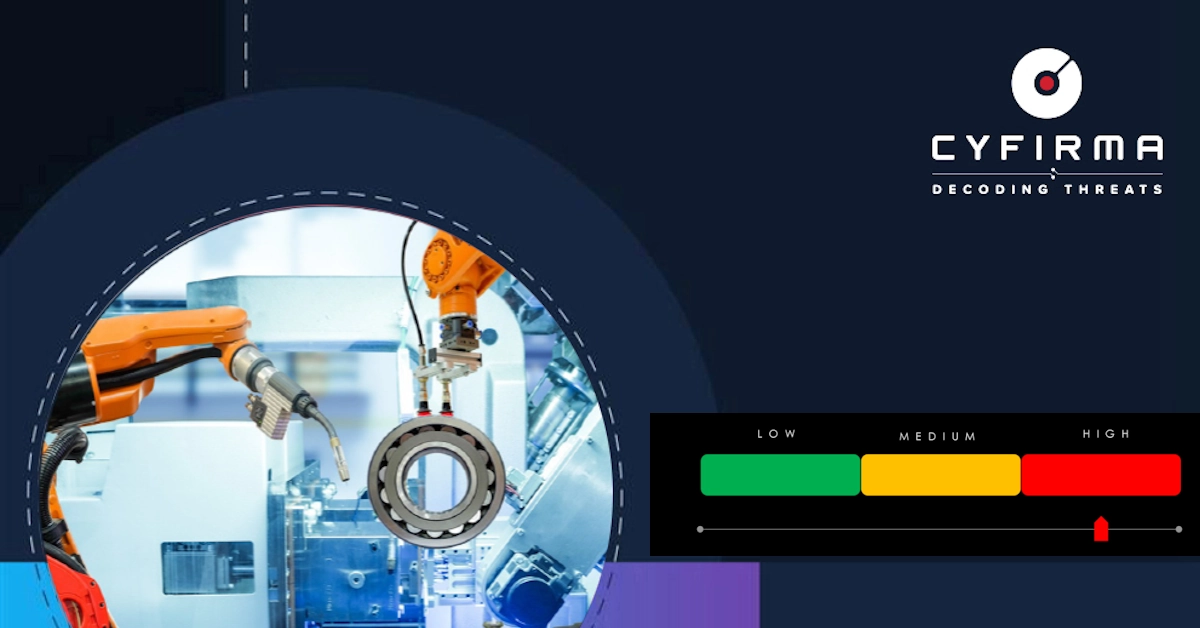Unmasked: Chinese Cyber Predators Targeting Global Manufacturing in Sophisticated Attack Wave
Manufacturing
2025-04-02 08:00:31Content

In a groundbreaking cybersecurity revelation, Cyfirma's latest research report has unveiled a disturbing trend of escalating cyber threats targeting the global manufacturing sector. The comprehensive study highlights the growing sophistication of Chinese Advanced Persistent Threat (APT) groups and financially motivated cybercriminal organizations.
The research exposes a complex landscape of cyber intrusions that are becoming increasingly targeted and strategic. Chinese state-sponsored hacking groups are emerging as primary actors, demonstrating unprecedented levels of technical expertise and strategic planning in their cyber attacks against manufacturing infrastructure.
Key findings indicate that these threat actors are not merely seeking financial gain, but are also engaged in industrial espionage, intellectual property theft, and strategic disruption of critical manufacturing supply chains. The attacks range from sophisticated network infiltrations to carefully crafted malware designed to compromise sensitive industrial control systems.
Manufacturing organizations are urged to enhance their cybersecurity posture, implementing robust defense mechanisms, continuous monitoring, and proactive threat intelligence strategies. The report serves as a critical wake-up call for industries worldwide, emphasizing the need for comprehensive and adaptive cybersecurity approaches in an increasingly digital and interconnected manufacturing ecosystem.
As geopolitical tensions and technological competition continue to evolve, these cyber threats represent a significant challenge for global manufacturing sectors, demanding immediate attention and strategic response from both public and private stakeholders.
Unmasking the Digital Predators: How Chinese Cyber Actors are Revolutionizing Manufacturing Threat Landscapes
In the rapidly evolving digital battleground of cybersecurity, manufacturing sectors worldwide are facing unprecedented challenges from sophisticated cyber adversaries. As technological innovation accelerates, so do the strategies of malicious actors seeking to exploit vulnerabilities in industrial infrastructure, with Chinese Advanced Persistent Threat (APT) groups emerging as primary architects of complex cyber intrusion campaigns.Cyber Warfare Unleashed: The Manufacturing Sector's Silent Digital Nightmare
The Emerging Cyber Threat Ecosystem
The contemporary manufacturing landscape has transformed into a complex digital ecosystem where technological advancement and cybersecurity vulnerabilities coexist in a precarious balance. Chinese cyber threat actors have meticulously developed intricate strategies that transcend traditional hacking methodologies, leveraging advanced reconnaissance techniques and sophisticated infiltration protocols. Modern manufacturing networks represent incredibly attractive targets due to their interconnected infrastructure and potential for substantial economic disruption. These cyber predators employ multi-layered attack strategies, combining technological sophistication with strategic intelligence gathering mechanisms that can penetrate even the most robust defensive systems.Strategic Motivations Behind Cyber Intrusions
Understanding the underlying motivations of these cyber threat actors reveals a complex geopolitical and economic landscape. Financial incentives and strategic intelligence gathering represent primary drivers for these sophisticated intrusion campaigns. Chinese APT groups demonstrate remarkable precision in targeting specific manufacturing sectors, utilizing advanced persistent threat techniques that allow prolonged, undetected network infiltration. The economic implications of these cyber attacks extend far beyond immediate financial losses. By systematically extracting proprietary technological information, these threat actors can potentially undermine entire industrial ecosystems, creating long-term strategic advantages for their sponsoring entities.Technological Arsenal of Cyber Threat Actors
The technological sophistication employed by these cyber threat groups represents a quantum leap in digital warfare capabilities. Utilizing advanced machine learning algorithms, zero-day exploit development, and complex social engineering techniques, these actors can bypass traditional cybersecurity defenses with unprecedented efficiency. Their methodological approach involves comprehensive reconnaissance, strategic vulnerability mapping, and precisely executed infiltration protocols. By combining human intelligence with cutting-edge technological tools, these cyber threat actors create multi-dimensional attack strategies that challenge conventional defensive paradigms.Global Manufacturing Sector's Defensive Imperatives
Confronting these evolving cyber threats requires a holistic, proactive approach from manufacturing organizations worldwide. Implementing robust cybersecurity frameworks, continuous threat intelligence monitoring, and adaptive defensive strategies have become critical survival mechanisms in this increasingly hostile digital environment. Collaboration between governmental cybersecurity agencies, private sector technology experts, and international regulatory bodies represents a crucial mechanism for developing comprehensive defensive strategies. By sharing threat intelligence and developing standardized response protocols, the global manufacturing ecosystem can incrementally enhance its resilience against these sophisticated cyber intrusions.Future Trajectory of Cyber Threat Landscapes
The ongoing digital transformation of global manufacturing sectors suggests an increasingly complex and dynamic cybersecurity environment. As technological capabilities continue expanding, cyber threat actors will correspondingly evolve their intrusion methodologies, creating an perpetual technological arms race. Anticipating and preempting these emerging threat vectors requires continuous investment in advanced cybersecurity research, talent development, and technological innovation. The manufacturing sectors that successfully integrate adaptive, intelligence-driven security frameworks will be best positioned to navigate these challenging digital terrains.RELATED NEWS
Manufacturing

Sukup Manufacturing Expands Horizons: New Iowa State Research Park Office Signals Growth Strategy
2025-04-15 18:04:16
Manufacturing

Breaking: AI Breakthrough Unlocks Titanium's Hidden Potential in Record-Speed Manufacturing
2025-03-07 16:18:52
Manufacturing

Manufacturing Powerhouse at Risk: North Carolina's Economic Crown Hangs in the Balance
2025-04-01 17:00:00





